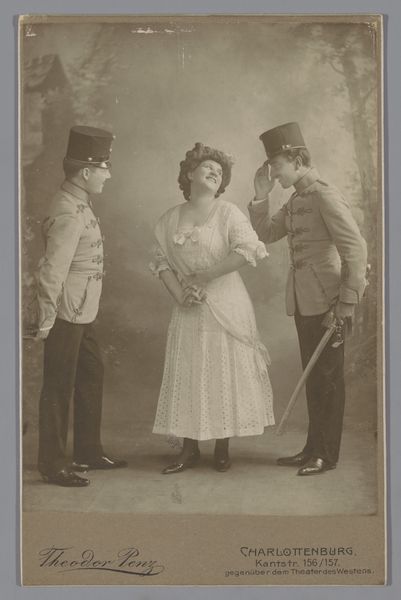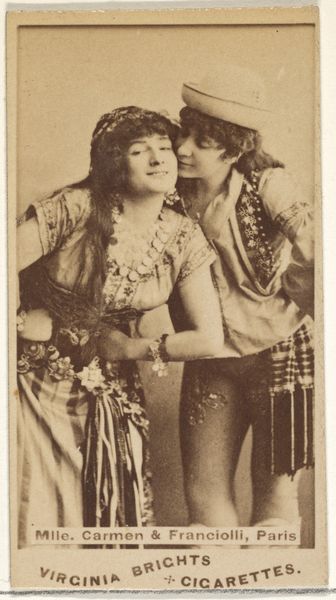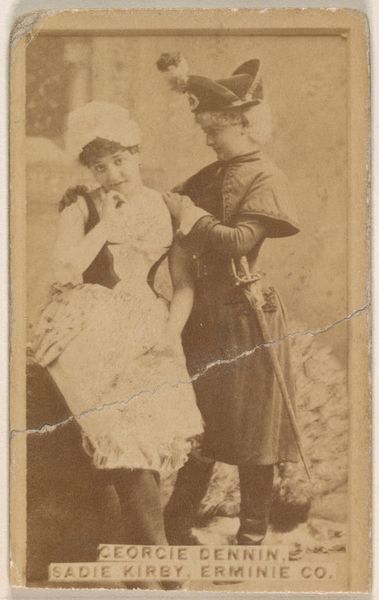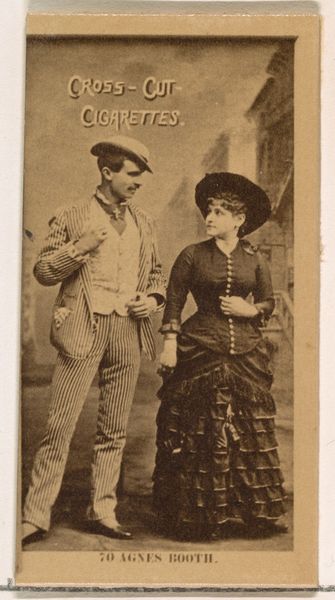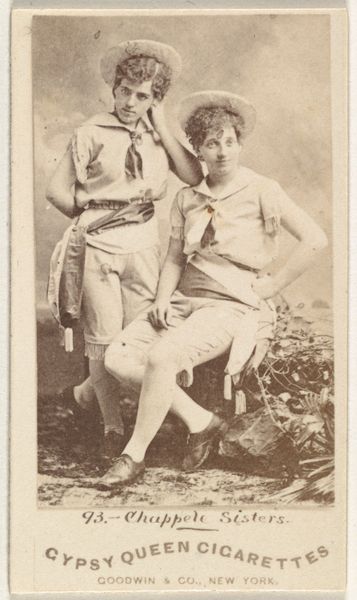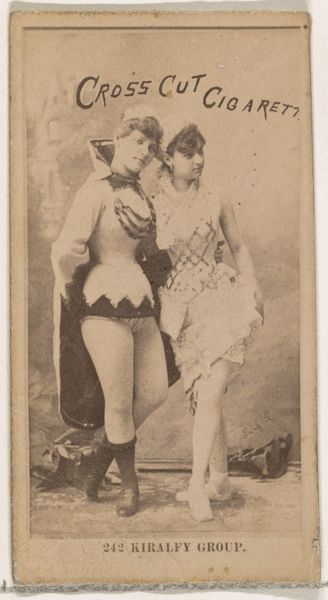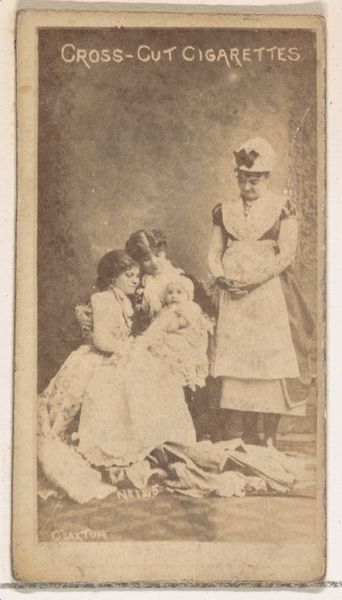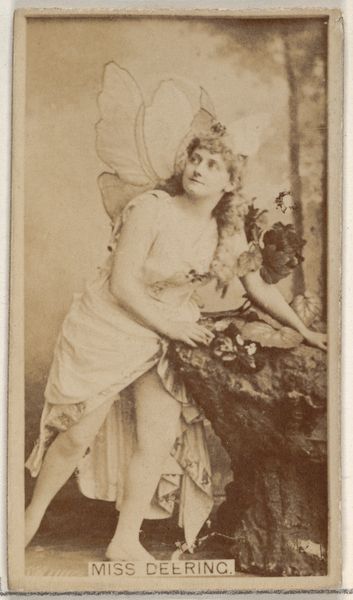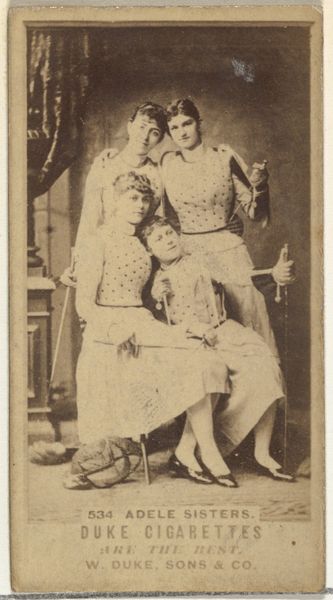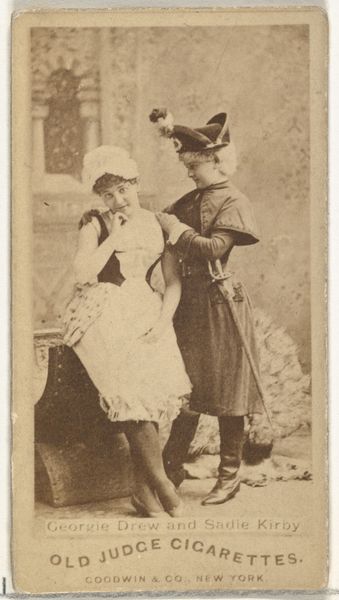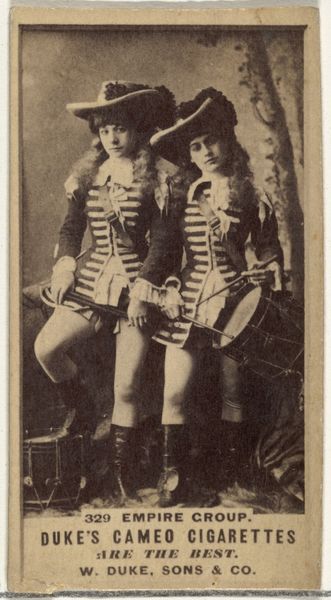
Card Number 91, Casperone Group, from the Actors and Actresses series (N145-6) issued by Duke Sons & Co. to promote Duke Cigarettes 1880s
0:00
0:00
drawing, print, photography
#
portrait
#
drawing
#
pictorialism
# print
#
photography
#
genre-painting
Dimensions: Sheet: 2 11/16 × 1 3/8 in. (6.8 × 3.5 cm)
Copyright: Public Domain
Curator: What an odd little tableau! Something about the rigid postures and sepia tone gives this a very staged and lifeless air. Editor: Indeed. We're looking at "Card Number 91, Casperone Group" a promotional image produced by W. Duke, Sons & Co. sometime in the 1880s to advertise their Duke Cigarettes. It now resides here at the Metropolitan Museum of Art. Curator: Advertising? I thought it looked like a genre scene of some sort. Editor: It is that as well, certainly playing into that aesthetic! You have a striking image, created using photography and print, designed to capture your attention while subtly associating these elegant performers with their brand. Note "Duke Cigarettes Are The Best," emblazoned along the top. Curator: Right, so its signifying purpose is, ostensibly, cigarette marketing. I wonder, however, how this photographic medium manipulates signs? Consider the arrangement. Three figures—two appear almost masculine in attire flanking a feminized presence; and those exaggerated costumes create a kind of theatrical tension. The formal balance strikes me, also, in its peculiar asymmetrical arrangement. Editor: The deliberate arrangement certainly tells a story. Actresses in costume were a popular subject for these cards, which speaks volumes about celebrity culture in the late 19th century and also of the societal aspirations it represents. These trade cards served not only as advertisements but as collectibles, distributed widely and fostering desires that speak volumes about social hierarchies and the burgeoning consumer culture. Curator: Yes, it reflects how industrialism and advertisement began affecting people's idea of beauty and artistic value at that time. How people in performance are selling their images in return of public interest or fame; it reflects some social structures and it could be viewed in modern terms too. Editor: Absolutely. And seeing it within the museum context, a former piece of disposable marketing is now valued and conserved, prompting reflections on changing cultural value and class. Curator: And that rigid pose has now taken a whole new interpretation! It does show the tension among marketing and values for the consumers! Fascinating how it's evolved, I must admit. Editor: It’s a testament to how our interpretations and frameworks shape our understanding of art, and these subtle prints offer rich historical texture, proving even ephemera can hold deeper meanings.
Comments
No comments
Be the first to comment and join the conversation on the ultimate creative platform.
